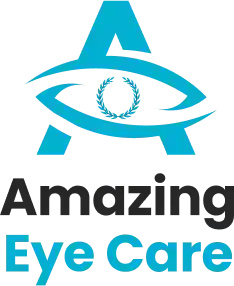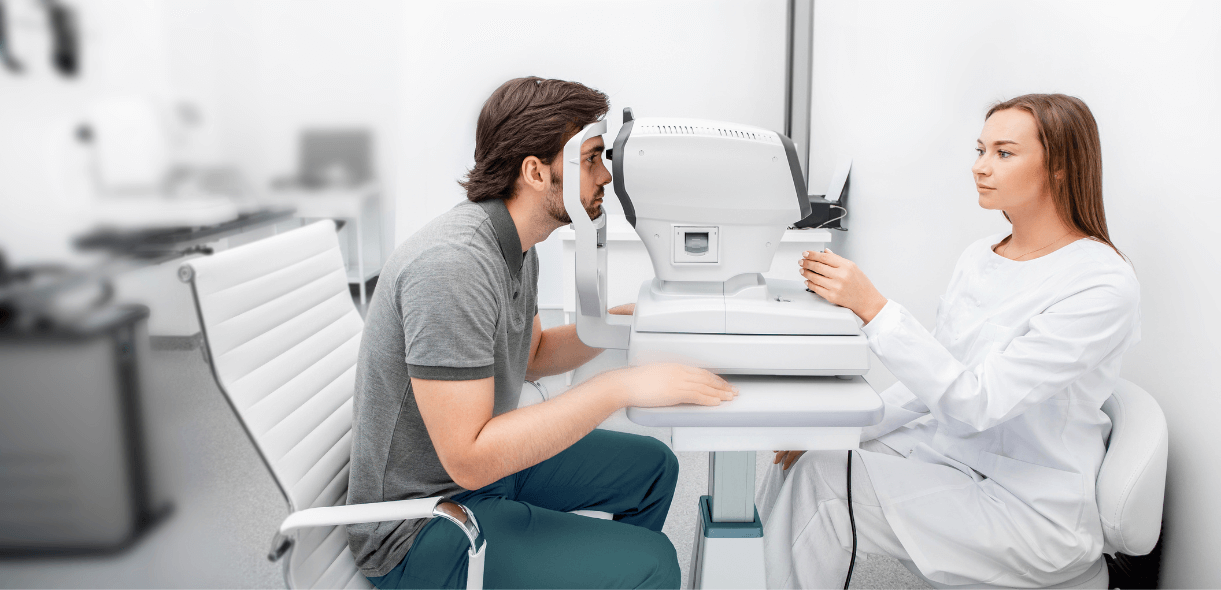Eye exams are crucial for maintaining good vision and overall eye health in adults. These exams involve a series of tests conducted by eye care professionals to assess visual acuity, detect any refractive errors, examine eye health, and screen for various eye conditions. Understanding the different types of eye exams and their importance can help individuals take proactive steps towards preserving their vision.
Types of Eye Exams
Visual Acuity Test
The visual acuity test is a fundamental examination that measures the sharpness of your vision. It assesses your ability to discern details and distinguish objects at various distances. During this test, you’ll typically be asked to read letters or symbols from a chart called the Snellen chart, which is placed at a specific distance, usually 20 feet away. The eye care professional will record your ability to see clearly and accurately at different distances, identifying any visual impairment or refractive errors.
Procedure of Visual Acuity Test:
- You’ll be seated in a well-lit room facing the eye chart.
- The eye care professional will cover one of your eyes and ask you to read aloud the letters or symbols on the chart with your uncovered eye.
- Based on your responses, the professional will determine the smallest line of letters you can read accurately.
- The process is repeated for the other eye.
Benefits of Visual Acuity Test:
- Early Detection: The visual acuity test helps detect common refractive errors such as nearsightedness (myopia), farsightedness (hyperopia), and astigmatism early on, allowing for timely intervention and correction.
- Accurate Prescription: By assessing your ability to see clearly at different distances, this test enables eye care professionals to prescribe the most suitable corrective lenses to optimize your visual acuity.
- Monitoring Eye Health: Regular visual acuity testing is essential for monitoring changes in vision over time and identifying any signs of eye diseases or conditions that may affect visual acuity.
Refraction Test
The refraction test is a key component of an eye examination that determines your exact eyeglass prescription. It helps eye care professionals accurately assess and correct any refractive errors in your vision, ensuring optimal clarity and focus.
Procedure of Refraction Test:
- You’ll be asked to sit in front of a phoropter, a specialized device used to measure refractive errors.
- The eye care professional will place different lenses in front of your eyes and ask you which ones provide the clearest vision.
- Based on your responses, the professional will adjust the lenses to determine the precise lens power needed to correct any refractive errors, such as myopia (nearsightedness), hyperopia (farsightedness), or astigmatism.
- Alternatively, an automated refractor may be used to measure your refractive error automatically, eliminating the need for subjective responses.
Benefits of Refraction Test:
- Accurate Prescription: The refraction test ensures that you receive the most accurate eyeglass prescription tailored to your individual vision needs, resulting in improved clarity and focus.
- Optimal Vision Correction: By determining the correct lens power to correct refractive errors, this test helps optimize your vision for various activities such as reading, driving, and using digital devices.
- Prevention of Eye Strain: Wearing the correct prescription lenses obtained through a refraction test can alleviate eye strain and discomfort associated with uncorrected refractive errors.
Eye Health Examination
An eye health examination is a comprehensive evaluation of the structures inside and around the eyes, aiming to assess overall eye health and detect any signs of eye diseases or conditions. This examination is crucial for preserving vision and preventing vision loss.
Procedure of Eye Health Examination:
- The eye care professional will start by conducting a visual inspection of the external structures of the eyes, including the eyelids, conjunctiva, and sclera.
- Advanced tools such as a slit lamp and ophthalmoscope may be used to examine the internal structures of the eyes in detail.
- The professional will examine the cornea, iris, lens, retina, and optic nerve to detect any abnormalities, lesions, or signs of disease.
- Specialized imaging techniques such as optical coherence tomography (OCT) may be employed to obtain high-resolution images of the retina and optic nerve for further analysis.
Benefits of Eye Health Examination:
- Early Disease Detection: An eye health examination helps detect eye diseases and conditions at their earliest stages when treatment is most effective. Common conditions that can be detected include cataracts, macular degeneration, diabetic retinopathy, and glaucoma.
- Monitoring Eye Health: Regular eye health examinations are essential for monitoring changes in the eyes over time, especially for individuals at risk of developing eye diseases due to factors such as age, genetics, or systemic health conditions.
- Preservation of Vision: By identifying and addressing potential risk factors and abnormalities early on, an eye health examination can help preserve vision and prevent vision loss.
Glaucoma Test
A glaucoma test is a crucial examination aimed at measuring the pressure inside your eyes to assess your risk of developing glaucoma, a group of eye conditions that can lead to optic nerve damage and vision loss if left untreated.
Procedure of Glaucoma Test:
- The eye care professional may use a tonometer, a specialized instrument, to measure the intraocular pressure (IOP) within your eyes.
- Depending on the type of tonometer used, the procedure may involve gently applying pressure to the surface of your eye or directing a puff of air onto your eye to measure the IOP.
- The measurement obtained is compared to normal ranges to assess your risk of developing glaucoma. Elevated intraocular pressure may indicate increased risk, although not all cases of glaucoma are associated with high pressure.
Benefits of Glaucoma Test:
- Early Detection: Glaucoma commonly progresses slowly and may not exhibit noticeable symptoms during its initial stages. Regular glaucoma testing allows for early detection of elevated intraocular pressure and prompt intervention to prevent vision loss.
- Risk Assessment: Individuals with a family history of glaucoma, those aged 40 and older, and individuals with certain medical conditions such as diabetes are at higher risk of developing glaucoma. Glaucoma testing helps assess the risk and allows for timely management.
- Prevention of Vision Loss: By detecting and treating glaucoma early, the progression of the disease can be slowed or halted, preventing irreversible damage to the optic nerve and preserving vision.
Dilated Eye Exam
A dilated eye exam is a comprehensive examination that involves the use of dilating eye drops to enlarge the pupils, enabling a thorough evaluation of the retina and optic nerve. This examination is essential for detecting eye diseases and conditions that may not be apparent during a standard eye exam, such as macular degeneration and retinal detachment.
Procedure of Dilated Eye Exam:
- Prior to the examination, dilating eye drops are instilled into each eye to temporarily enlarge the pupils.
- It takes approximately 20 to 30 minutes for the pupils to fully dilate, during which time you may experience increased sensitivity to light and blurred vision.
- Once the pupils are sufficiently dilated, the eye care professional will use specialized instruments such as an ophthalmoscope or slit lamp to examine the retina and optic nerve at the back of the eye.
- The professional will carefully assess the health of the retina, including the macula and peripheral areas, as well as the optic nerve, looking for any signs of abnormalities or eye diseases.
Benefits of Dilated Eye Exam:
- Comprehensive Evaluation: A dilated eye exam provides a more thorough evaluation of the retina and optic nerve compared to a standard eye exam, allowing for the detection of subtle changes or abnormalities that may indicate underlying eye diseases.
- Early Detection: By detecting eye diseases such as macular degeneration, diabetic retinopathy, and retinal detachment early on, a dilated eye exam enables timely intervention and treatment to prevent vision loss and preserve eye health.
- Accurate Diagnosis: The enlarged pupils provide a clear and unobstructed view of the structures at the back of the eye, facilitating accurate diagnosis and treatment planning for various eye conditions.
Visual Field Test
A visual field test is a diagnostic examination that assesses your peripheral vision, which is essential for tasks such as driving and navigating your environment. This test involves focusing on a central target while responding to the appearance of lights in your peripheral vision. It plays a crucial role in detecting conditions such as glaucoma and optic nerve damage, which can affect peripheral vision and lead to vision loss if left untreated.
Procedure of Visual Field Test:
- You’ll be seated in front of a dome-shaped instrument called a perimeter, which contains a grid of lights.
- The eye care professional will instruct you to focus on a central target, usually a small light or a crosshair.
- Lights will be randomly projected onto different areas of the dome, and you’ll be asked to press a button or indicate when you see each light appear in your peripheral vision.
- The test measures your ability to detect lights of varying brightness at different locations within your visual field.
- Results are plotted on a visual field map, which helps identify any areas of reduced sensitivity or visual field loss.
Benefits of Visual Field Test:
- Early Detection: Visual field testing can detect subtle changes in peripheral vision that may indicate the presence of eye diseases such as glaucoma, optic nerve damage, and neurological disorders.
- Monitoring Disease Progression: For individuals diagnosed with conditions affecting peripheral vision, such as glaucoma, visual field testing is essential for monitoring disease progression and assessing the effectiveness of treatment.
- Baseline Assessment: Visual field testing provides a baseline measurement of peripheral vision, allowing for comparison with future test results to track changes over time and guide treatment decisions.
Impact of Eye Tests on Quality of Life
Regular eye exams play a vital role in maintaining good vision and overall quality of life for adults. By detecting and addressing vision problems early, individuals can prevent vision loss and maintain independence in their daily activities. Moreover, comprehensive eye exams can uncover underlying health issues, such as diabetes and hypertension, which may manifest in the eyes.
Conclusion
In conclusion, various types of eye exams are essential for preserving vision and detecting eye diseases and conditions in adults. From assessing visual acuity to examining eye health and screening for glaucoma, these tests provide valuable insights into overall eye health. By prioritizing regular eye exams, individuals can take proactive steps towards protecting their vision and maintaining a high quality of life. Don’t underestimate the importance of routine eye care – schedule your eye exam today for optimal eye health and vision wellness. And if you reside in Atascocita, TX area then you can always visit Amazing Eye Care for a eye doctor in Atascocita.


